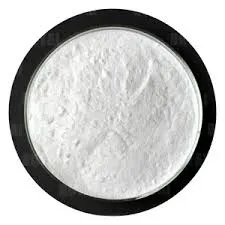
Dec . 14, 2024 18:37 Back to list
Hydroxypropyl Methylcellulose HPMC Powder Uses and Applications in Various Industries
Understanding Hydroxypropyl Methylcellulose (HPMC) Powder
Hydroxypropyl methylcellulose (HPMC) is a prominent cellulose derivative that has gained significant attention in various industries, largely due to its unique properties and versatility. This non-ionic, semi-synthetic polymer is used widely in pharmaceuticals, food technology, cosmetics, and construction. This article explores the characteristics, applications, and benefits of HPMC powder.
What is HPMC?
HPMC is a white to off-white powder that is derived from cellulose, a natural polymer obtained from plant cell walls. Through chemical modification, cellulose is transformed into HPMC, which enhances its solubility and functional properties. The degree of substitution of hydroxypropyl and methyl groups determines the specific grades of HPMC, ultimately influencing its behavior in various applications.
Properties of HPMC
The properties of HPMC make it an exceptional choice for a broad range of applications
1. Water Solubility HPMC is soluble in water, allowing it to form clear, viscous solutions which can be beneficial in various formulations.
2. Thickening Agent It serves as an excellent thickening and binding agent, helping to improve the texture and stability of products.
3. Film-Forming Ability HPMC can form flexible films when dried, providing a protective layer in pharmaceutical and cosmetic formulations.
4. Controlled Release In pharmaceutical applications, HPMC is often used in matrix tablets due to its ability to modulate the release of active ingredients.
5. Non-Toxic and Biodegradable As a natural polymer, HPMC is non-toxic and biodegradable, making it an environmentally friendly option that is safe for various applications.
hydroxypropyl methylcellulose hpmc powder

Applications of HPMC
1. Pharmaceuticals HPMC is widely employed in the pharmaceutical industry. It is used as a binder in tablet formulations, helps to provide controlled release in drug delivery systems, and acts as a suspending agent for liquid formulations. Its biocompatibility and non-toxic nature enhance its utility in creating various medications that are effective yet safe for consumers.
2. Food Industry In food technology, HPMC is used as a thickener, emulsifier, and stabilizer. It enhances the texture and mouthfeel of food products, improves moisture retention in baked goods, and aids in binding ingredients in low-fat products. Its ability to form gels also makes it beneficial in the preparation of certain food items.
3. Cosmetic Products HPMC is a common ingredient in cosmetics, where it serves as a thickening and binding agent. It is often included in lotions, creams, and gels to enhance texture and stability, allowing these products to spread smoothly on the skin. Additionally, its moisturizing properties help improve the overall feel and performance of cosmetic formulations.
4. Construction Industry The construction sector also utilizes HPMC as a crucial additive in cement, mortar, and tile adhesives. Its water retention properties enhance workability and adhesion, while also allowing for longer open time, which is crucial for construction projects. HPMC improves the durability and strength of building materials, contributing to better overall performance.
Benefits of HPMC
The utilization of HPMC powder provides various benefits across multiple industries. Firstly, its multipurpose nature allows manufacturers to streamline their formulations by integrating HPMC to achieve multiple functions simultaneously, reducing the need for additional ingredients. Furthermore, HPMC’s ability to improve stability and shelf life of products ensures higher quality and consumer satisfaction.
Moreover, HPMC is advantageous from a regulatory viewpoint. Being non-toxic and derived from natural sources, it aligns with current consumer trends favoring safe and environmentally friendly products. For industries facing strict regulations on additives and ingredients, HPMC offers a compliant solution.
Conclusion
Hydroxypropyl methylcellulose powder stands out as a versatile ingredient with wide-ranging applications in pharmaceuticals, food, cosmetics, and construction. Its unique properties, including water solubility, thickening abilities, and non-toxic nature, make it an indispensable tool for formulators across various sectors. As industries continue to innovate and seek efficient, safe, and eco-friendly alternatives, HPMC is poised to remain at the forefront, contributing to advancements in product development and consumer satisfaction.
-
Versatile Hpmc Uses in Different Industries
NewsJun.19,2025
-
Redispersible Powder's Role in Enhancing Durability of Construction Products
NewsJun.19,2025
-
Hydroxyethyl Cellulose Applications Driving Green Industrial Processes
NewsJun.19,2025
-
Exploring Different Redispersible Polymer Powder
NewsJun.19,2025
-
Choosing the Right Mortar Bonding Agent
NewsJun.19,2025
-
Applications and Significance of China Hpmc in Modern Industries
NewsJun.19,2025







